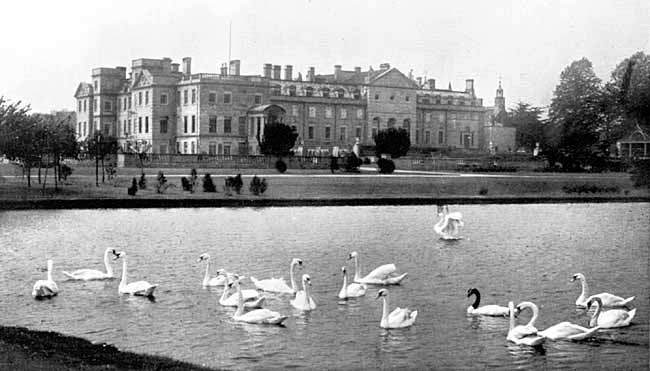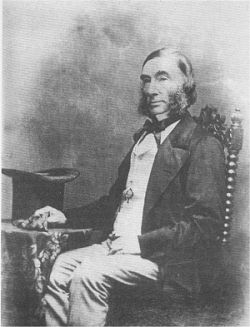
Welbeck Abbey [PHOTO: theoddmentemporium.tumblr.com]
British nobility is rather famous for its eccentric members. One such was a curious recluse named William John Cavendish-Scott-Bentinck, 5th Duke of Portland and Marquess of Titchfield. Since that’s quite a mouthful and all the male relatives of his family were named William, we’ll call him John. He has also been known famously as “The Prince of Silence”.
Early Life

PHOTO: wikimedia
William John Cavendish-Scott-Bentinck was born on September 17, 1800, in London, England. His mother was named Henrietta Scott, and his father was also a William Bentinck, 4th Duke of Portland, who lived a very boring political life. You can see how this might get confusing.
Our William, or John, as we’re calling him, was one of nine children. He was baptized at St. George’s Church in Hanover Square on the 30th of September, and, as he grew up, was educated at home. He served in the army when he was just eighteen as an ensign in the Foot Guards, and was eventually transferred to be a captain with the 7th Light Dragoon Guards three years later, in 1821. Military life did not suit him, though. According to reports, he suffered from “lethargy” due to “delicate health”.
In 1824, his elder brother, another William, died. John inherited his position as Marquess of Titchfield, and took up the expected role of Tory MP in King’s Lynn – a traditional family seat. He would hold that seat for just two years, where he spoke infrequently and was never politically active. When he was twenty-six, he surrendered it to his uncle, citing that his health was too poor for him to keep it.
During his younger life he was described as being a talented hunter and one of the best judges of horse in all of England. He also had a penchant for fine opera, and, as a young man, he fell in love with famous opera singer Adelaide Kemble.
He proposed to Adelaide, but she turned him down, and this event is often cited as the trigger for his later eccentricity.
The Prince of Silence
Rejection did not sit kindly on John’s shoulders. After Adelaide turned down his proposal, John (already a staunch introvert and sensitive fellow), turned into a recluse. He became terribly shy, and lived in just five rooms of his estate. Only one person, his personal valet, was ever allowed to enter and see him. He even refused his doctor!
For the rest of his life, John kept two letterboxes outside his rooms in his home at Welbeck Abbey. One was for ingoing mail, one for outgoing. If any of the servants or workmen on the grounds happened to see him, they were on strict orders never to acknowledge his presence. His staff took all of their orders by mail, and he only maintained his relationships with close family and friends through extensive letter writing.
He almost never left his rooms except to go out for nocturnal walks in the pitch black darkness. In order to see where he was going, a female servant was under strict orders to walk exactly forty yards in front of him with a lantern to light his way. When he was pressed to go out during the day, he would only do so if he was wearing two huge overcoats and a tall hat. He armed himself with an umbrella to hide behind in case anyone talked to him.
The story goes that, if he was required to visit his second home in London on business, he would ride his carriage all the way onto a train car, and then ride to his home in London. Once there, all the servants would hide as he hastily darted to his office through the main hallway.
![A corridor in Welbeck Abbey [PHOTO: theoddmentemporium.tumblr.com]](https://historythings.com/wp-content/uploads/2016/08/corridor_welbeck.jpg)
A corridor in Welbeck Abbey [PHOTO: theoddmentemporium.tumblr.com]
That wasn’t all he did. He stripped Welbeck Abbey of furniture and painted most of the rooms pink. And, when he grew bored of that, he drew up the plans for the biggest renovation project any home during his time had ever seen.
The Prince of Silence created his own network of secret tunnels beneath the abbey. They ran for fifteen miles – a vast labyrinth all his own that connected the various buildings on the estate and ran all the way to the train station nearby. Beneath his home, he constructed a picture gallery, ballroom, a library, an observatory with a glass ceiling, and a billiards room. Some of the tunnels were made with glass ceilings to let the light in, and, in case it got too gloomy, he ordered that all the rooms beneath the estate be painted pink and installed vibrant gas lighting throughout the complex.
![Welbeck Abbey [PHOTO: strangeflowers.wordpress,com]](https://historythings.com/wp-content/uploads/2016/08/welbeck.jpg)
Welbeck Abbey [PHOTO: strangeflowers.wordpress,com]
No one knows exactly what drove John to create this massive network all his own.
Perhaps he really was obsessed with seclusion, with creating a whole world where he would never have to see another living soul. It’s never been confirmed for sure.
Later Life and Death
![Bust of the 5th Duke of Portland [PHOTO: nottingham.ac.uk]](https://historythings.com/wp-content/uploads/2016/08/5duke_portland.jpg)
Bust of the 5th Duke of Portland [PHOTO: nottingham.ac.uk]
By now, some thought that he was horribly disfigured or mad – but contemporary accounts and photographs reveal he looked and seemed quite normal. The older he got, the more reclusive he became, and by the time of his death, he had a habit of insisting that chicken roasted at all times of the day and that the servants only bring him his food on heated trucks that ran in his tunnels.
John died on December 6th, 1879. He was 79 years old. He spent the last days of his life in London, at Harcourt House, because Welbeck Abbey was no longer habitable. He was buried in a simple grave at Kensal Green Cemetery in North London, with no heirs to inherit his estate after him.
The estate fell to his cousin, another William. Eventually, part of his estate would be converted into a museum commemorating his strange, reclusive life.
It’s unclear whether the rejection of Adelaide Kemble really was the cause of his eccentricity, or whether other, unknown factors were present. Rejection or no, the Prince of Silence lived a truly remarkable life, and his home still stands as a monument to one of the most famous and eccentric introverts in history.


